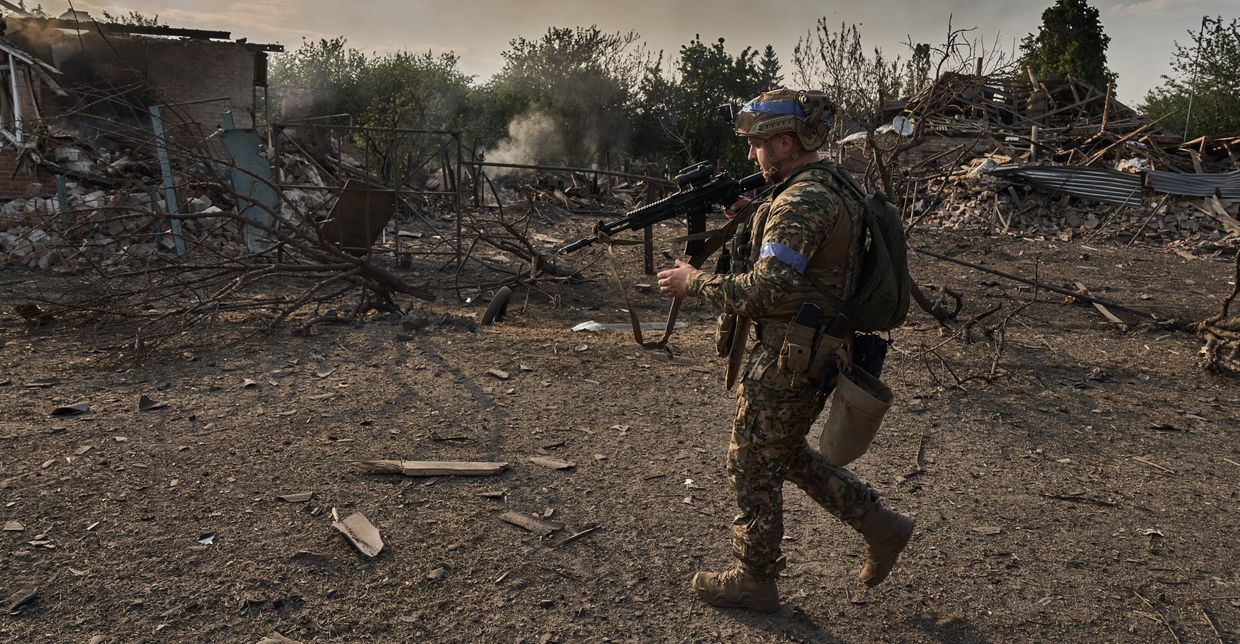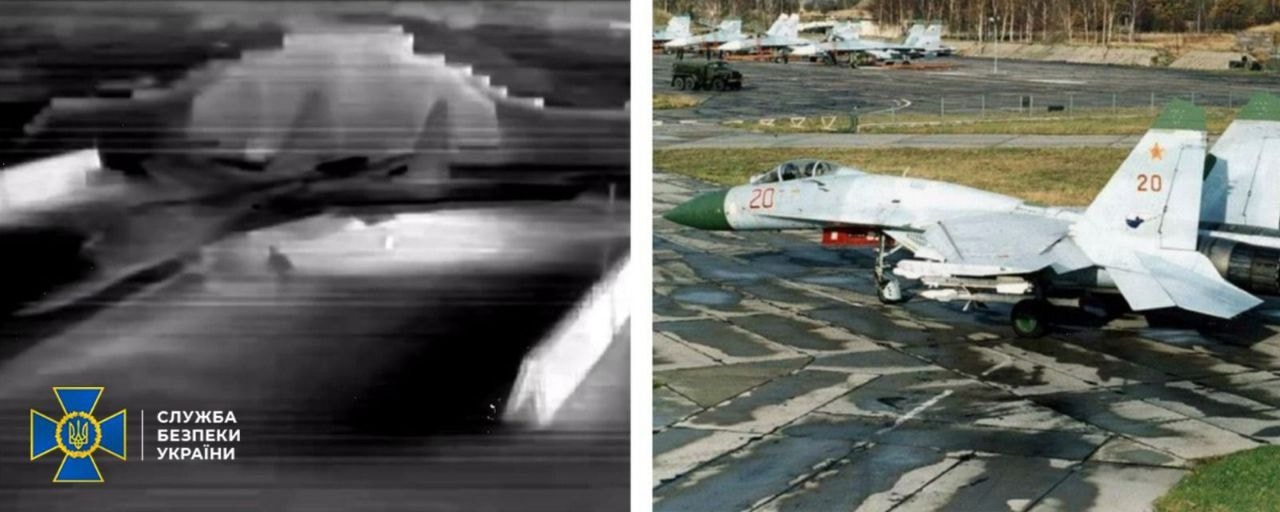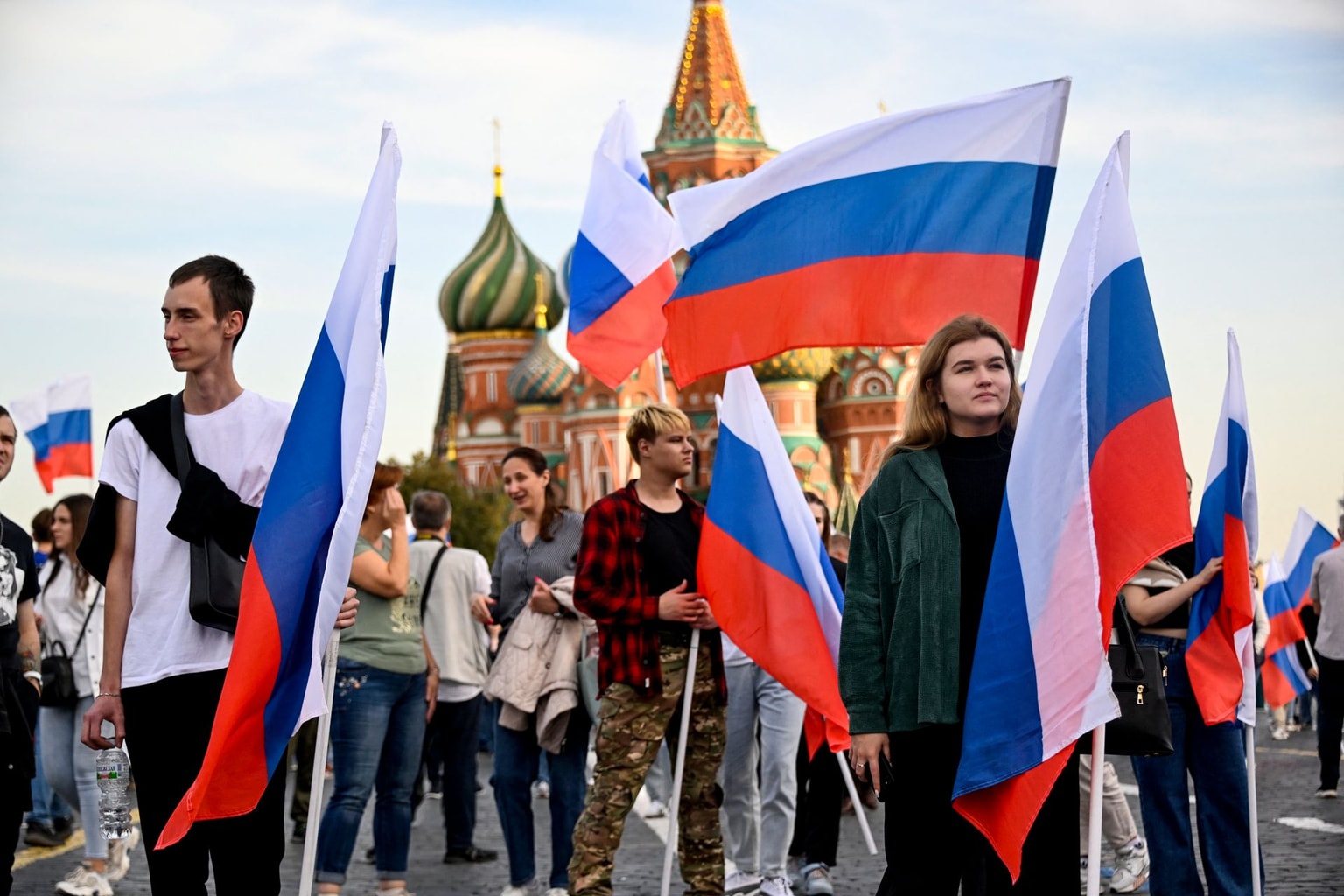
With all eyes on Kharkiv, Russian troops take one Donbas village after another
Ukrainian servicemen fire an artillery in the direction of Siversk, Donetsk Oblast, Ukraine, on April 1, 2024. (Wolfgang Schwan/Anadolu via Getty Images)
Editor's Note: The Kyiv Independent is not disclosing soldiers' full names since they disclosed information without authorization from their command.
DONETSK OBLAST—As public attention shifted to Moscow's renewed offensive in Kharkiv Oblast, Russian forces steadily advance in the country's easternmost Donbas region, which remains Moscow's primary target.
Moving west from the ruins of the two occupied Donetsk Oblast cities – Bakhmut and Avdiivka – Russian troops have been able to overrun a dozen small villages and come close to Chasiv Yar and a strategic highway south of the town.
Ivanivske, located on a highway between Bakhmut and Chasiv Yar, is among the latest villages facing a seemingly imminent capture. With the attack on Ivanivske, Russia is trying to reach an operational encirclement of Chasiv Yar, a heavily contested town located on strategic high ground.
According to soldiers and commanders on the ground, Russian forces entered Ivanivske in February and took control of the main roads by April.
To this day, fierce house-to-house fighting rages on for the last few blocks of Ivanivske, the soldiers told the Kyiv Independent. Ukrainian soldiers are methodically pushed out of the village, one destroyed house after the other.
Despite the Russian progress, the Ukrainian military claims that Russia "doesn't have any success" despite intensified efforts in the area.
In a commentary to the Kyiv Independent, Lieutenant Colonel Nazar Voloshyn, a spokesman for the Khortytsia grouping operating in the region, denied that the village might soon fall.
South of Chasiv Yar, the Russians are advancing in an attempt to cut a key supply route – T0504 Highway. Russian troops are around 10 kilometers away from the part of the highway connecting Kostiantynivka and Pokrovsk, according to open source maps.

The increased threat on the Kostiantynivka-Pokrovsk section of the highway is due to Russia's breakthrough and capture of Ocheretyne in April and the nearby Umanske in June.
Ukrainian soldiers have confirmed the withdrawal from Ocheretyne, while Kyiv has not reacted to the Russian Defense Ministry's claim about Umanske, located around 10 kilometers south.
With the situation in Donetsk Oblast worsening as resources remain scarce, exhausted Ukrainian units are being thinly spread across the growing front.
"It appears Ukraine has stabilized the front in Kharkiv, but the concern is whether they left the Chasiv Yar and Pokrovsk fronts more vulnerable," said Rob Lee, senior fellow in the Foreign Policy Research Institute's Eurasia program.
"So far, it doesn't appear Russia has capitalized on these changes, but they still have uncommitted reserves."
"We saw it in Avdiivka and elsewhere, where when Russia really focused on one part of the front, it becomes quite difficult because they have a variety of advantages," Lee told the Kyiv Independent.
Lack of resources
Ukraine's defenses around Chasiv Yar worsened in February when the prolonged ammunition shortage became critical. The soldiers say that the lack of crucial resources over the three spring months allowed the Russian troops to make a breakthrough in Ivanivske.
The weapons shortage forced Kyiv to conserve limited ammunition and vehicles.
The Russian artillery overwhelmed Ukraine by what seemed like a 10-to-one fire ratio, according to Dmytro, a 54-year-old staff sergeant from Aidar Battalion, part of the 5th Separate Assault Brigade.
"Our artillery was silent," Dmytro said.
It wasn't just the artillery and mortar shells that were lacking. Ukraine also didn't have enough anti-aircraft missiles to prevent Russian planes from approaching Chasiv Yar.

According to Lieutenant Volodymyr, who is part of an anti-aircraft missile regiment deployed in the area, there was a critical shortage of missiles for the Soviet-era Buk family of medium-range air defense systems.
Russian MiG aircraft carrying KAB aerial bombs could fly as close as 25 to 30 kilometers to Chasiv Yar, Volodymyr said.
The 27-year-old lieutenant believes that Ivanivske would not have been lost if Ukraine had enough air defense capability to protect infantry.
However, the situation eased when air defense missiles and ammunition began arriving in May, shortly after the U.S. officially committed $60 billion in aid for Ukraine.
The loss of Ivanivske
While Ukraine was still recovering from the last stand and fall of Avdiivka in February, Russia pushed through shallow Ukrainian defenses in the area, quickly reaching Ivanivske.
The soldiers are worried that there is a realistic possibility that Russian forces could overrun the nearby villages and capture Chasiv Yar, using the heights to advance deeper into Donetsk Oblast.
According to two mortarmen with the 710th Security Brigade of the State Special Transport Service's Assault Company deployed near Ivanivske in February, their unit's infantry suffered an extremely brutal shift.
Of the roughly 70 infantrymen – mostly young and inexperienced – deployed to a trench just outside the village, about 80 percent were either killed or severely wounded within four days, according to one of the two mortarmen, named Dmytro. A wave of first-person view (FPV) drones inflicted heavy damage as soon as the company reached the trench, making it impossible to hold on to the position.
According to Dmytro, the Russians soon captured the position and entered Ivanivske with no direct combat. Ukrainian mortar and artillery positions would come under heavy fire and were deprived of the much-needed fire support.


FPV drones have been a game changer in combination with ground assaults, allowing the Russians to advance sometimes without relying on infantry – similar to Moscow's triumph over the 710th's position outside Ivanivske.
"If an FPV tries to fly to you once, twice, or three times and it falls, (Russian troops) begin working with something more serious (such as mortars or artillery)," Dmytro added.
"And it's whether you will be lucky or not, if it will kill you or not."
Ukraine and Russia's increased reliance on FPVs is transforming warfare, with both sides ramping up their domestic production of cheap but effective single-use drones operated via a headset.
FPV drones account for about 90% of the injuries over the past half a year, according to medic Oleksii, with the 130th Territorial Defense Brigade deployed near Chasiv Yar. Oleksii said that FPV drones can be deadlier than artillery because they are more precise and can directly strike the target.
There is "a lot more activity assembling drones" on the Russian side, but who holds the advantage also ultimately comes down to the number of pilots and their skills, said Samuel Bendett, a senior fellow at the Center for a New American Security think tank.

For the Ukrainian soldiers on the ground slowly losing positions, it is becoming increasingly uncertain that they could hold off the Russian offensive capability in the upcoming months.
"We are losing every day little by little – somewhere we regained a little, somewhere they took, but we lost much more than we gained," Dmytro said.
The battles for Chasiv Yar will be defined by Ukraine's ability to tackle manpower shortage and whether Russia decides to concentrate its resources in the upcoming months, according to the U.S.-based expert Lee.
Whether Ukraine can counter Russia's growing advantage of assembling and using FPV drones will also be a key factor.













